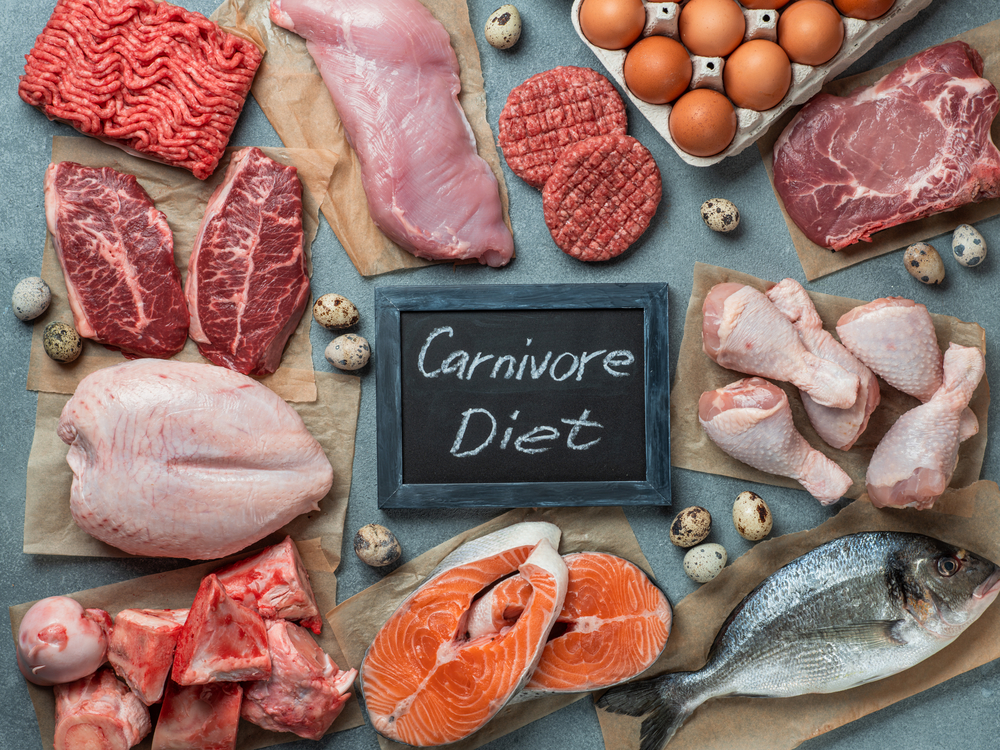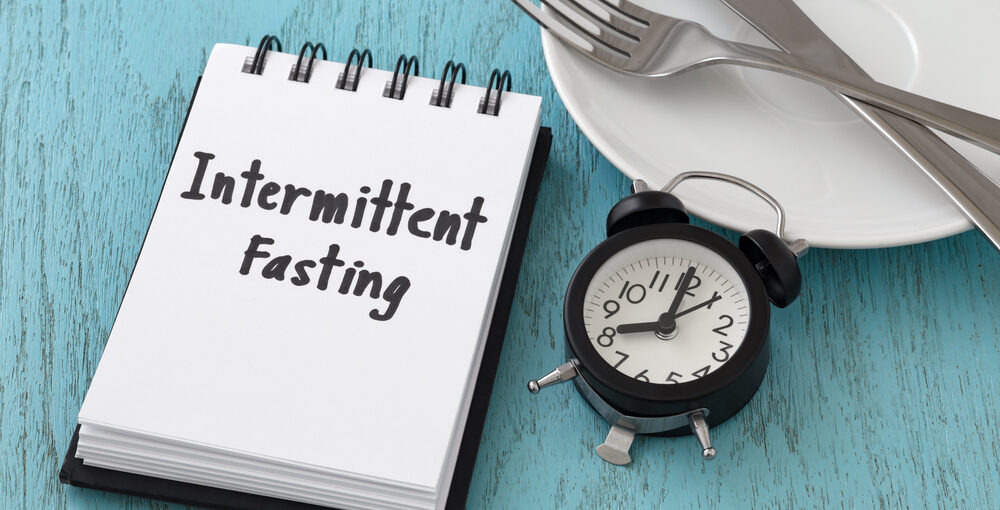Do you want to get in shape and lose body weight but you don’t know how? Are you looking for a healthy diet routine to achieve your weight loss goals without having to count calories? The 30-day intermittent fasting challenge is an excellent way to kickstart your weight loss goals and follow journey to better health.
I have had experience with intermittent fasting and can attest to its effectiveness loss of body weight. It is a great way to jumpstart your metabolism, burn fat, and lose weight.
In this article, I’m going to give a general introduction to intermittent fasting and provide step-by-step instructions on tackling the 30-day challenge.
Crib notes: 30 day intermittent fasting challenge

The 30-day challenge involves at least 16 hours of fasting each day and eating within a 8-hour window. Sticking to a healthy diet is a must! You should not consume any food or drinks with calories during the fasting period. This means no coffee with milk or cream, tea, soda. You can only drink water, black coffee, and unsweetened tea during fasting. See your doctor to check your blood sugar levels before and after your challenge.
During the 8-hour eating window, you should focus on healthy foods such as lean proteins, fruits, vegetables, and whole grains. Avoid processed foods and sugary snacks. This will help you to stay full longer and reduce cravings for unhealthy foods. Stick to the plan by only eating healthy proteins and no sugar of any kind.
Maybe you’ve unknowingly heard about intermittent fasting or totally unfamiliar with it. No matter where you’re starting from, this 30-day challenge will have you seeing results in no time.
What is Intermittent fasting?
Fasting is a dietary pattern that restricts food intake and has several variations. It can be used to regulate eating habits and aid in weight loss, which is backed by science. The two most popular types of fasting are water fasting and intermittent fasting. Water fasting involves abstaining from all food and drink, except for water, for a fixed period. Intermittent fasting (IF) is when eating for a fixed number of hours throughout the day. Usually, the eating window is 7 hours during the day or night, depending on when your average eating period starts. It does not involve tracking calories or macronutrients, making it more of a lifestyle than a diet.
What are the benefits of Intermittent Fasting?
Intermittent fasting (IF) will help with weight loss, reduce the risk of heart disease and diabetes, preserve muscle mass, and improve psychological well-being. During IF, the body goes through periods where it uses stored energy from fat instead of glucose from carbohydrates. This helps to reduce body fat while preserving muscle mass. In addition, IF has improved mental clarity and focus and decreased stress levels.
Some Benefits:
- Lower Insulins Levels
- Helps to improve blood pressure
- Can improve blood sugar levels
- May help to improve your energy levels
Finally, Fasting has been studied as a potential way to extend longevity and delay aging in animals. In one study, rats that fasted lived 28% longer than those with unlimited access to food. Other research has also found that fasting could effectively increase lifespan and delay disease. However, these studies are mostly limited to animal models, so further research is needed to understand how fasting may impact human longevity and aging.
The 30-Day Intermittent Fasting Challenge

Now that you know intermittent fasting and its benefits, let’s get into the challenge! The 30-day intermittent fasting challenge is designed to help you kickstart your journey to better health. It involves an 8-hour eating window and 16 hours of fasting each day.
Here are the steps to follow for the 30-day challenge:
1. Choose your eating window: Pick a 7-hour window during which you will eat all your meals. This should be a time that works best for you and fits into your daily routine. (NO JUNK FOOD)
2. Stick to your eating window: During this 7-hour period, make sure to stick to it and don ‘t eat outside of it.
3. Drink plenty of water: Make sure to stay hydrated throughout the day by drinking plenty of water.
4. Eat healthy meals: During your eating window, make sure to focus on eating healthy meals that are high in protein and fiber and low in sugar and processed foods.
5. Exercise regularly: Exercise is essential to any health routine and can help boost your metabolism and burn fat.
6. Track your progress: Keep track of how you’re feeling throughout the challenge and make sure to note any changes in weight, energy levels, or overall health.
7. Celebrate your success: After 30 days, take a moment to celebrate your success and reflect on how far you’ve come!
By following these steps, you can start your journey to better health with the 30-day intermittent fasting challenge. Remember, it’s important to listen to your body and make sure that you’re not overdoing it. If you experience any adverse effects, stop the challenge and consult a doctor. Good luck!
Intermittent Fasting Meal Plan: Here’s Exactly When & What To Eat
During the fasting period, it is important to stay hydrated by drinking lots of water and beverages under 50 calories, such as black coffee, unsweetened tea, and lemon water.
An intermittent fasting meal plan can help you reach your goals safely, effectively, and healthily. However, eating the wrong foods during your eating window can prevent your body from resetting insulin levels and burning fat. A good intermittent fasting meal plan should include nutrient-dense foods such as lean proteins, healthy fats, complex carbohydrates, fruits, vegetables, nuts, and seeds. Limiting processed foods high in sugar or refined carbohydrates is also important as these can cause spikes in blood sugar levels, leading to weight gain.
Intermittent fasting Meal Schedule

Intermittent fasting is a popular diet plan for body weight maintenance and other health benefits like improved insulin levels that has been gaining traction in recent years for it many benefits. It involves 16 hours of fasting and 8 hours of eating, which can be done daily or on alternate days. This schedule is simple and sustainable for most people to get started with.
However, intermittent fasting is not a one-size-fits-all approach and should be experimented with for at least 3 weeks before changing it up.
Intermittent fasting typically involves fasting for 12 hours or more daily, including during sleep.
TIP: Understanding your hours of fasting will help you reach your goals quicker.
Check out the: Carnivore Diet Health Benefits to see if a Carnivore diet is right for you.
Fasting meal plan for beginners.
It’s important to note that intermittent fasting controls when you eat, not what you eat; consult your doctor if you have any health conditions before starting. Scheduling meals when following an intermittent fasting plan can be tricky but there are some tips to help make it easier. For example, planning ahead by preparing meals in advance or setting reminders on your phone can help ensure that you stick to the plan.
When following this meal plan, choosing the right foods during your eating window is important. Eating unhealthy foods can prevent your body from resetting insulin levels and burning fat, so focusing on nutrient-dense whole foods such as lean proteins, healthy fats, fruits, vegetables, and complex carbohydrates is important. Additionally, drinking plenty of water throughout the day will help keep you hydrated and energized while fasting.
30-day sample meal plan for intermittent fasting:
Day 1: Breakfast – 2 boiled eggs with black coffee or tea. NO Sugar!
Lunch – Greek yogurt with fruit; Dinner – Grilled chicken and vegetables.
Day 2: Breakfast – Oatmeal with nuts and berries; Black Coffee or Tea
Lunch – Tuna salad; Dinner – Baked salmon and roasted vegetables.
Day 3: Breakfast – Smoothie made with fresh fruits and water, banana, and chia seeds; With Black Coffee or Tea
Lunch – Avocado toast; Dinner – Stir-fry with tofu.
Day 4: Breakfast – Scrambled eggs with spinach; with lack coffee or tea
Lunch – Lentil soup; Dinner – Grilled shrimp and quinoa.
Day 5: Breakfast – Omelette with mushrooms and peppers; with black coffee or tea
Lunch – Hummus wrap; Dinner – Grilled turkey burger and sweet potatoes.
Day 6: Breakfast – Chia seed pudding with raspberries;
Lunch – Quinoa bowl with black beans, corn, tomatoes, avocado, and lime juice; Dinner – Salmon cakes with a side of steamed broccoli.
Day 7: Breakfast – Yogurt parfait topped with granola (unsweeten) and fresh fruit; with black coffee or tea
Lunch – Chicken Caesar salad wrap ; Dinner – Fish tacos served on whole wheat tortillas.
Days 8-30: Alternate-day fasting with the above meals to suit your taste preferences! Stay within your 8-hour eating window.
In conclusion, the 30-day intermittent fasting challenge can be a great way to jump-start your journey toward a healthy diet and wellness. Not only will you improve your physiological health, but you’ll also gain mental clarity and emotional resilience. In addition, through consistency and accountability, you’ll find yourself making healthier choices for the long term, leading to lasting results.
So what are you waiting for? Start your own 30-day intermittent fasting journey today and get one step closer to your overall health goals!
Wrap Up
Read MY STORY on how I was fat and unmotivated, turned my life around, and stopped eating ultra-processed foods. I will tell you what I did to start the process of losing weight, exercising, and eating right. I am a regular guy who was able to change his life around, and you can too. Also, check out Stop the Global Fast Food Insanity! – FAT FIT FREE , Losing weight with psychedelic mushrooms! and How Exercise Improves Your Mental Health– FAT FIT FREE

